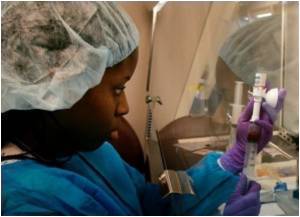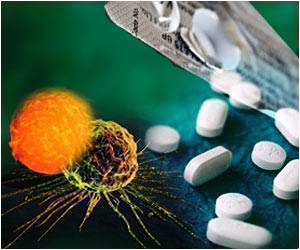
The list of candidate drugs included 5-fluorouracil (5-FU). 5-FU has been widely used to treat a variety of adult cancers but has not been formally tested against ependymoma. Based on study results, St. Jude is planning a clinical trial of 5-FU in young ependymoma patients, said senior author Richard Gilbertson, M.D., Ph.D., director of the St. Jude Comprehensive Cancer Center. Gilbertson credited the method used in this study with highlighting 5-FU's potential.
Researchers hope to use the same system to expand chemotherapy options for patients with other cancers. "This approach should significantly advance the efficiency and speed with which we discover and develop new treatments for rare cancers and cancer subtypes," the investigators noted. Jennifer Atkinson, Ph.D., a former St. Jude postdoctoral fellow, is the first author. R. Kiplin Guy, Ph.D., chair of the St. Jude Department of Chemical Biology and Therapeutics, and Gilbertson are corresponding authors.
Rather than waiting years for clinical trial results, this system promises to take just months to provide key information about a drug's effectiveness and optimal administration, Gilbertson said.
The results are good news for patients with ependymoma and other cancers where treatment options are limited and the outlook remains bleak. While overall childhood cancer survival rates are now almost 80 percent, ependymoma remains incurable in up to 40 percent of patients. The tumor is found in 150 to 200 U.S. children annually, making it the third most common pediatric brain tumor. Treatment has changed little in the past 40 years and is limited to surgery and radiation.
Along with identifying and prioritizing drug development candidates against ependymoma, the research provided insight into the tumor's biology. The screening identified several messenger proteins, known as kinases, as possible new regulators of the tumor cell proliferation that makes cancer deadly. The abnormal tumor kinase activity occurred in certain pathways in tumor cells, including the insulin-signaling pathway and the centrosome cycle.
Advertisement
For this project, investigators focused on a subtype D ependymoma. In earlier research, Gilbertson and his colleagues showed that extra copies of the EPHB2 gene caused this tumor subtype. The investigators used this information to develop an accurate model of subtype D ependymomas in mice. The mouse model includes the same mutation in the same neural stem cell responsible for the human disease and was crucial for speeding drug development.
Advertisement
Of the 634 compounds that showed activity against subtype D ependymoma cells, four demonstrated a two-fold greater ability to block the growth of the tumor cells, but not normal cells. The drugs included 5-FU and two closely related compounds. The fourth was beta-escin, which belongs to a family of drugs that are generating interest as potential chemotherapy agents.
5-FU also proved more effective than four other chemotherapy drugs in slowing tumor growth and extending the lives of mice with subtype D ependymoma. 5-FU also appeared less toxic to normal mouse brain cells than another drug, bortezomib, included in the study. The findings provided preliminary evidence that the screening system might provide an early indication of drug toxicity. The information could help guide treatment and prioritize drugs for development, researchers said.
The screening also highlighted a possible role for kinase inhibitors. Those are drugs that block activity of proteins that help drive cell division and sustain tumors. More than 18 inhibitors are in clinical trials that target the kinases this study tied to proliferation of both normal and ependymoma tumor cells.
Source-Eurekalert













